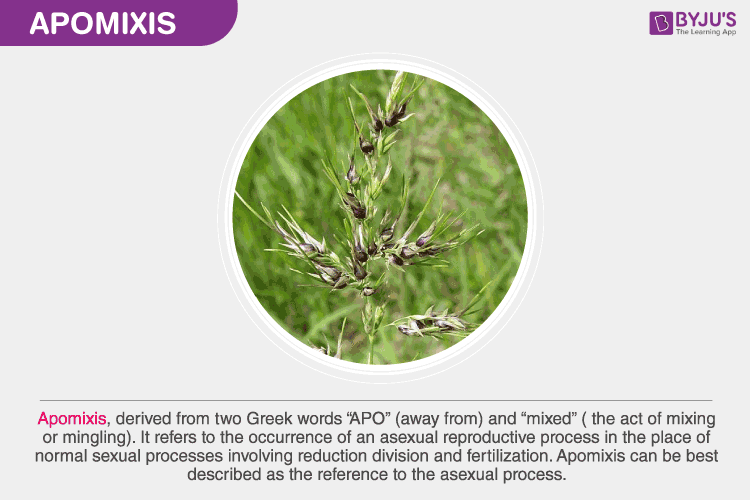Some organisms reproduce asexually, and thus produce offspring without the fertilisation process. Both apomixis and parthenogenesis are asexual means of offspring production.
What is apomixis?
Apomixis refers to the production of seed without undergoing the fertilisation process. There are no gametes involved in the formation of the embryo. It is a type of asexual reproduction usually seen in higher plants. Plants belonging to the Rutaceae, Rosaceae, Gramineae and Compositae families are apomictic in nature. Also, cereals like wheat and maize show a few instances of apomixis.
Some species can reproduce only by apomixis. This is called obligate apomixis. Whereas, some can reproduce by both sexual and asexual means. This is termed facultative apomixis.

What is parthenogenesis?
Parthenogenesis is a sort of apomixis. The embryo is formed directly from the egg without the fertilisation process. It is typical among single-celled organisms and some animals and plants. Organisms with no sex chromosomes can also reproduce by parthenogenesis. But monogamous or isogamous organisms cannot replicate using this process.
Difference between Apomixis and Parthenogenesis
Apomixis |
Parthenogenesis |
|
Apomixis is a type of asexual reproduction where the embryo develops from the seeds without the process of fertilisation. |
Parthenogenesis is a type of apomixis where the egg cells help in the development of an embryo. |
|
It produces a genetically identical clone of the mother cell. |
Here, the embryos develop from an unfertilised egg, and the offspring are genetically identical. The apomictic parthenogenesis produces the clone of the mother. |
|
The types of apomixis are – Recurrent apomixis, Non-recurrent, Adventitious and Vegetative apomixis. |
The major two types of parthenogenesis are – Natural and Artificial parthenogenesis. |
Visit BYJU’S Biology for more interesting topics.
Frequently Asked Questions
What is parthenocarpy?
Parthenocarpy is a condition in which organic fruits are created without the development of seeds. The fruits develop without the fertilisation process. Thus, they are largely seedless and are termed “virgin fruits”. This parthenocarpy can occur both naturally, and also artificially.
What is the difference between parthenogenesis and parthenocarpy?
Parthenogenesis can occur in plants, animals or microbes. Here, the unfertilised egg matures into an embryo. Examples – parthenogenesis in the honey bees, lizards, etc. Whereas, parthenocarpy is the production of seedless fruits. Parthenocarpy is seen only in flowering plants. Examples – seedless banana, watermelons, etc.
What is agamospermy?
It is the asexual means of producing seeds without fertilisation. The plant propagates by means of the apomictic seeds. They usually occur in the gymnosperms.
What are the uses of apomixis?
Apomixis is specially used in the seed production process. The hybrid seeds are produced this way. Moreover, they prevent the loss of characters in hybrids. This type of reproduction paves the way for a genetically identical population. Also, the apomixis type of reproduction is not dependent on pollinators.

Also Read
Comments